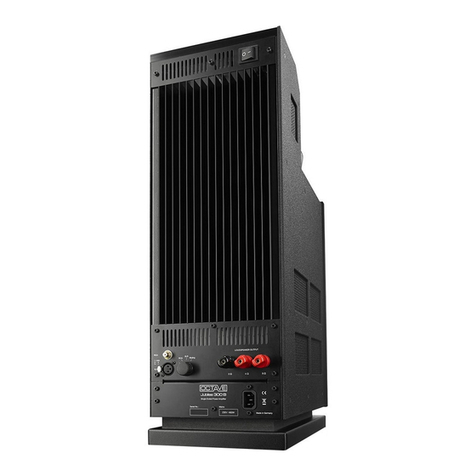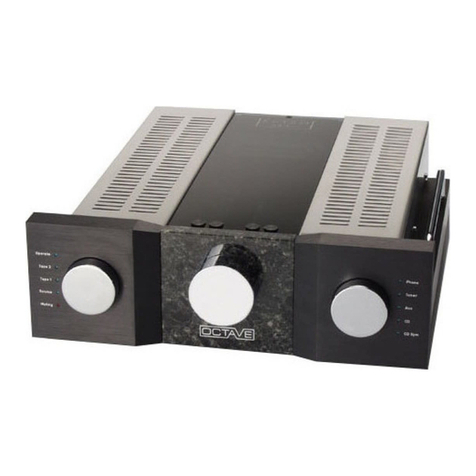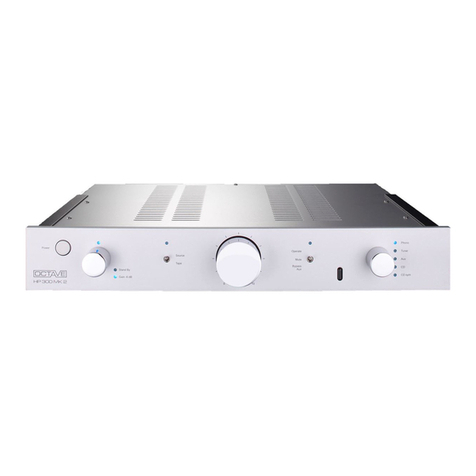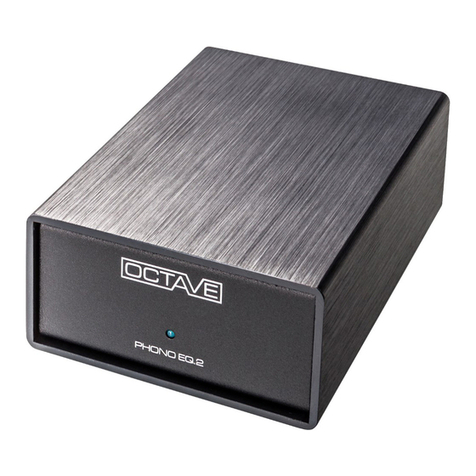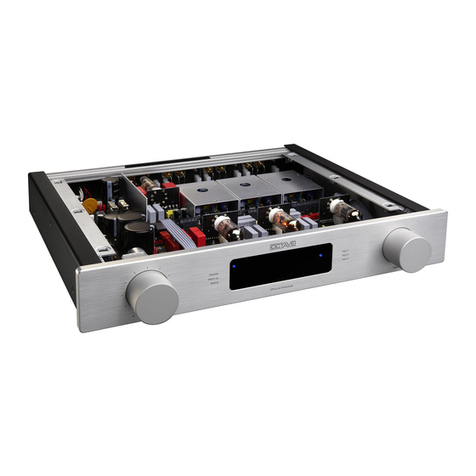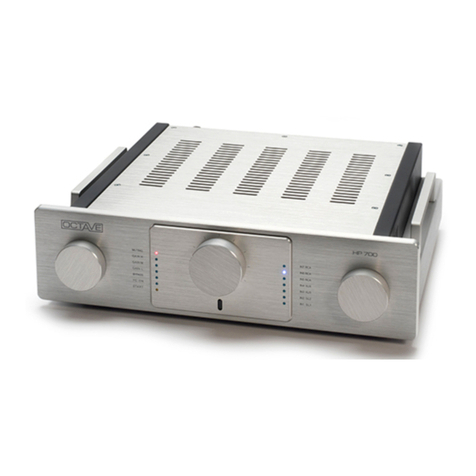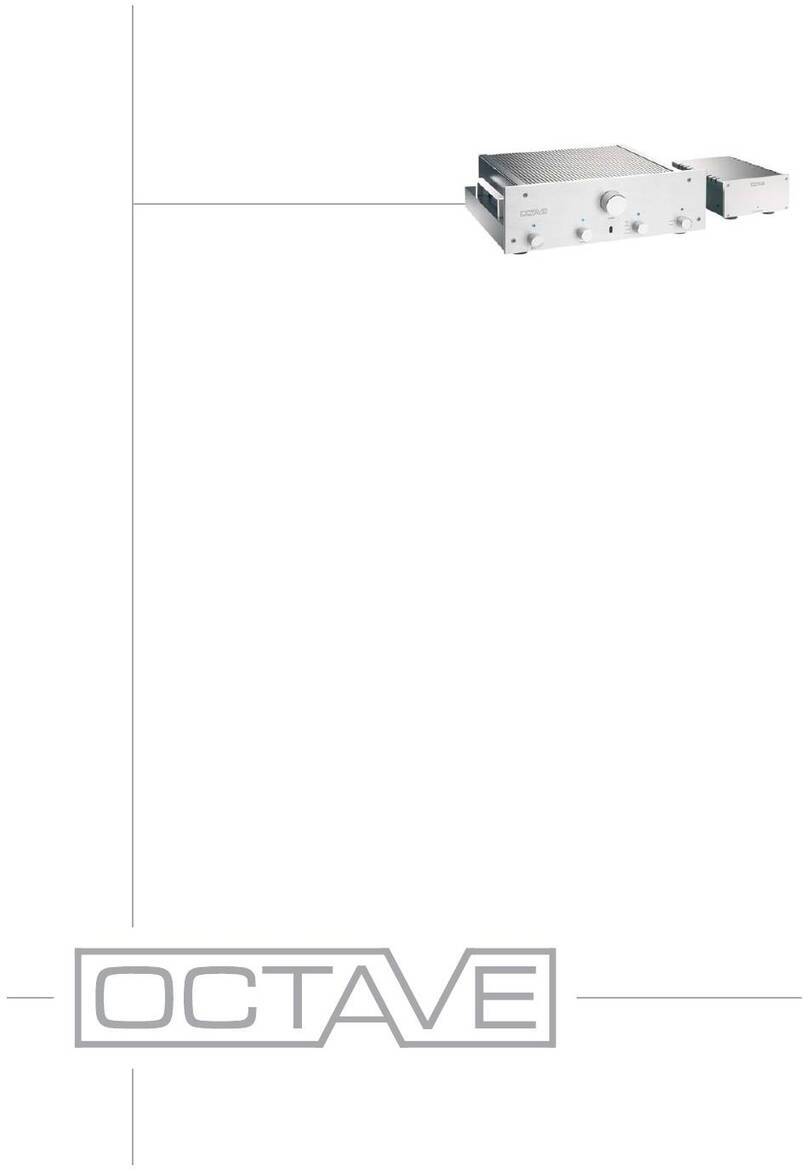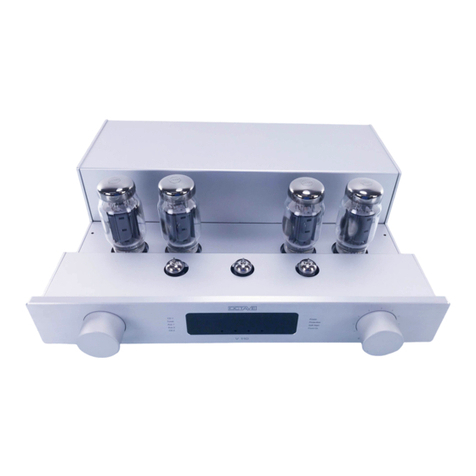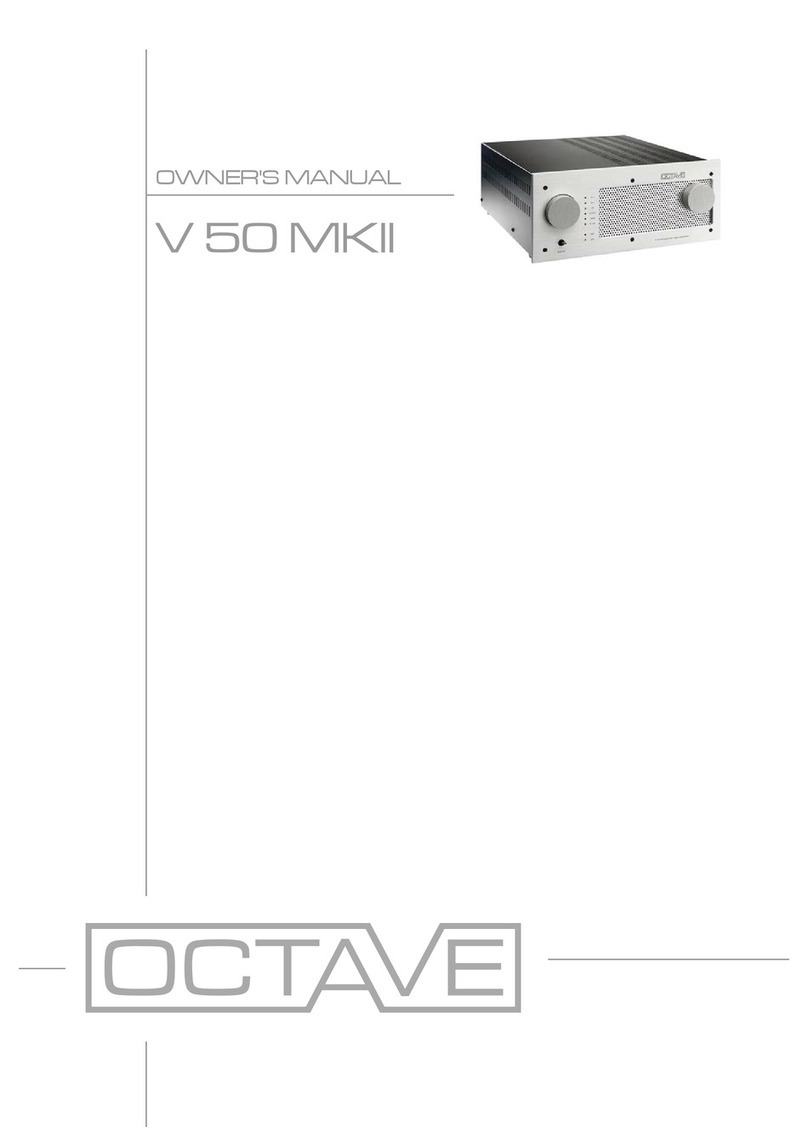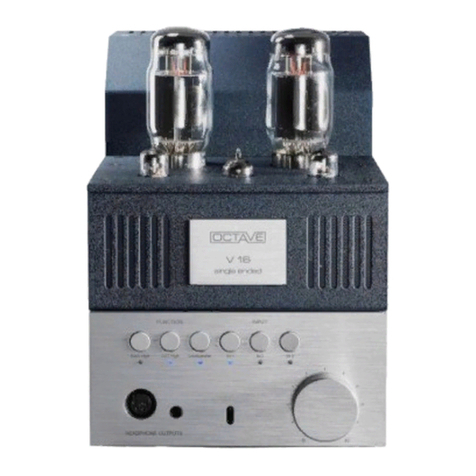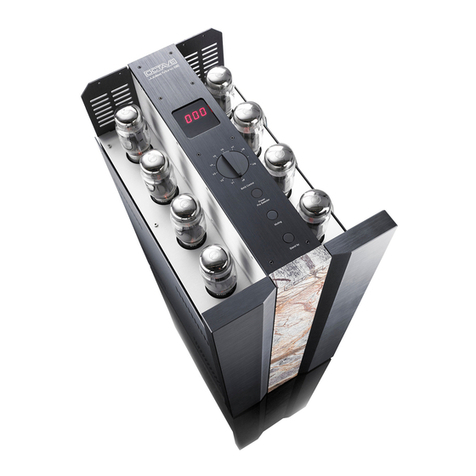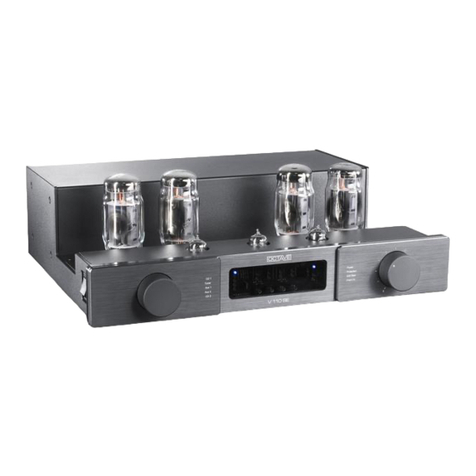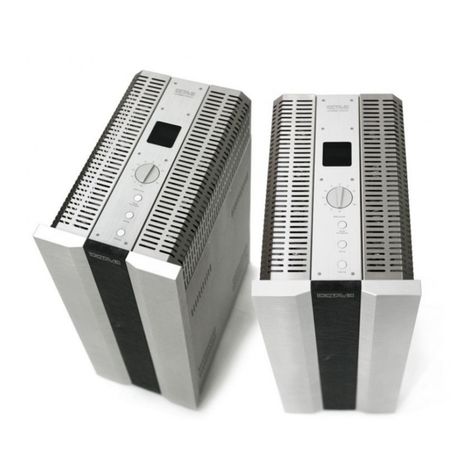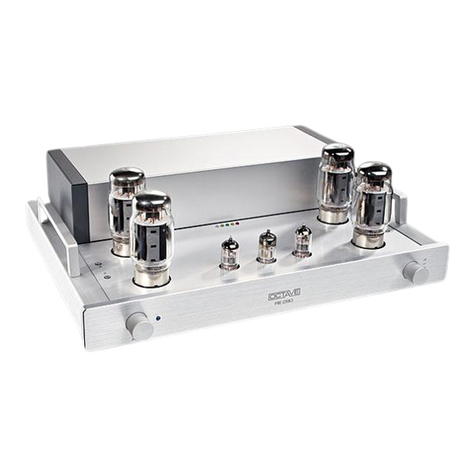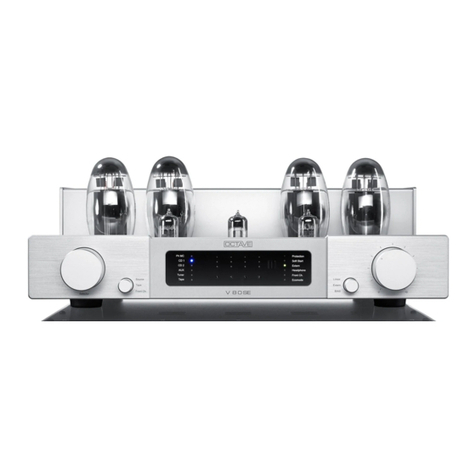
7
1. DESCRIPTION OF THE V 70 Class A
Class-A. A promise that has fuelled the highest expectations in the audiophile scene since the very
beginning. For most, Class-A simply stands for pure sound, but often enough it has been coupled
with limited output power.
In short, a “Class A concept” technically means a higher quiescent current setting and therefore
has less distortion (almost only second-order harmonics, referred to as k2), but also a limited full
modulation with less power. Push-pull concepts, on the other hand, can give 4-16 times the power
compared to Class-A, but struggle with inharmonic distortions (i.e. odd harmonics k3 and k5). Two
opponents, if you will: sound versus power. Of course, Andreas Hofmann was tempted to combine
both concepts into something new.
The result of many years of development is a typical Octave amplifier, the V 70 Class A, a Class A
push-pull amplifier in a pentode circuit.
For this, an absolutely unique and completely new class-A technology had to be developed:
The Dynamic Bias Control.
Dynamic Bias Control (DBC) means that A. Hofmann has found ways to dynamically shift the
limited dynamic range, and thus the limited power of the Class-A-concept, according the power
requirements. The development of the dynamic operating point setting (DBC) made a self-
regulating Class-A-amplifier possible with approximately twice the output power of 50 W RMS, with
up to 70 W peak power. This technology combines the tonal purity of Class A with the dynamics
and performance of push-pull A/B technology.
The modern concept of a Class-A push-pull amplifier in a pentode circuit enables the Class-A
virtues to be guaranteed across the entire frequency response up to maximum modulation. The
enormous power, with up to 70 watts of music power, is significantly above the output level of
conventional Class A amplifiers and is more than sufficient to drive virtually any loudspeaker.
This new integrated amplifier is equipped with a symmetrical input as standard and if a turntable is
to be connected, the optional phono board (either MC or MM) offers the ideal solution.
The V 70 class A uses an automatic bias circuit. The amplifier adjusts itself to the tube used and
requires no further adjustments. The proven BIAS measurement with the colored LED lights is still
used. However, this is only used to check that the four tubes are working properly.
Similar to the other top models from Octave, the V 70 Class A features the power selector: power
High and Low, in order to be able to optimally adapt the amplifier to different power tubes. Due to
the high output power in Class A operation, a KT 120 or KT 150 tube must be used for power High.
KT 88 or 6550 variants should be operated at power Low. Then there are still about 15 W Class A
and 25 W peak Power available.
Characteristic technologies from Octave are used, such as power management with electronic
monitoring of the working conditions, along with the unique ECO mode, the modern home cinema
bypass circuit and the practical, regulated preamplifier output (which allows the direct connection of
a subwoofer). Our special power supply technology protects the amplifier against mains
disturbances.
Growing fluctuations in the network and high frequency mains disturbances no longer cause sonic
fluctuations.
This makes the Class A tube amplifier technology even easier and more flexible to use and you
can relax with the Octave V 70 Class A to concentrate on the essentials: relishing in pure musical
enjoyment.
